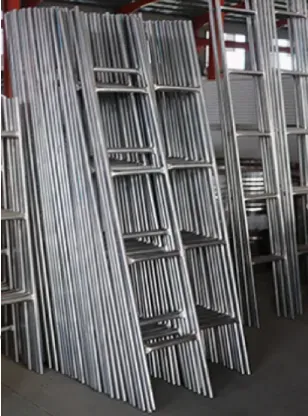loading...
- No. 9, Xingyuan South Street, Dongwaihuan Road, Zaoqiang County, Hengshui, Hebei, China
- admin@zjcomposites.com
- +86 15097380338
- Welcome to visit our website!
frp steel structure
Understanding the Role of FRP in Steel Structures
In the realm of modern engineering and construction, the integration of innovative materials has predetermined the direction of design philosophy and structural performance. Fiber Reinforced Polymer (FRP) is one such innovative material, gaining notable attention for its application in strengthening and retrofitting steel structures. This article delves into the properties, advantages, and typical applications of FRP in conjunction with steel constructions.
What is FRP?
FRP is a composite material made from a polymer matrix reinforced with fibers. Common fibers used include glass, carbon, and aramid, each imparting distinct properties to the composite. The polymer matrix, which typically consists of epoxy or polyester resin, binds the fibers together and provides a protective layer. This combination results in a lightweight yet incredibly strong material resistant to corrosion, chemical damage, and extreme environmental conditions.
Advantages of Using FRP in Steel Structures
1. Corrosion Resistance One of the primary advantages of FRP is its corrosion resistance. Unlike traditional materials that may degrade over time due to environmental factors, FRP maintains its integrity, extending the lifespan of steel structures, particularly in chemically aggressive environments like marine or industrial settings.
2. Improved Strength-to-Weight Ratio The lightweight nature of FRP means that it requires less structural support than heavier materials. This can lead to reduced overall weight of the construction and lower transportation and installation costs. Engineers can design more efficiently, utilizing fewer resources while achieving similar or superior structural performance.
3. Ease of Installation FRP materials can be manufactured in a variety of shapes and sizes, making them adaptable to various structural needs. Their lightweight properties allow for easier handling and faster installation, significantly reducing construction time and labor costs.
4. Design Flexibility The versatility of FRP allows for innovative solutions in design. It can be molded into complex shapes that would be difficult or impossible to achieve with traditional materials. This flexibility is particularly beneficial in architectural applications where aesthetics are equally as important as functionality.
frp steel structure

5. Low Maintenance Steel structures strengthened by FRP require minimal maintenance due to the inherent durability of the composite material. This can lead to significant savings in long-term operational costs, as maintenance activities tend to be labor-intensive and expensive.
Applications of FRP in Steel Structures
FRP’s versatility enables numerous applications in steel structures across various sectors, including
- Bridge Construction FRP can be used to reinforce steel beams and girders, enhancing their load-bearing capacity. Its corrosion resistance is particularly advantageous in prolonging the service life of bridges exposed to harsh environmental conditions.
- Building Rehabilitation In retrofit scenarios, FRP wraps are often applied to existing steel columns and beams to enhance their strength, stiffness, and ductility without altering the original structure dramatically.
- Industrial Structures Many industrial plants utilize FRP in conjunction with steel frameworks to protect valuable assets from corrosive environments, thus improving structural integrity and safety.
- Wind Turbines and Towers As sustainability becomes more critical in engineering, FRP is increasingly utilized in the construction of wind towers to leverage its strength while reducing weight and facilitating transportation and installation.
Conclusion
The integration of Fiber Reinforced Polymer within the realm of steel structures heralds a new era of construction. With its unique properties, FRP offers a plethora of advantages over traditional materials, enhancing durability, reducing maintenance costs, and providing design flexibility. By continuing to explore and harness the benefits of FRP, engineers and architects can develop more sustainable, efficient, and robust infrastructure for the future. This remarkable material stands as a testament to how innovative approaches can solve existing challenges in structural engineering, promising a brighter horizon for construction methodologies worldwide.
-
Premium FRP Handrail for All ApplicationsNewsAug.29,2025
-
Low Maintenance FRP Mini Mesh Grating ProductsNewsAug.29,2025
-
Innovative FRP Square Tubes for Modern Industrial SolutionsNewsAug.29,2025
-
FRP Water Storage Tanks Wholesale Solutions for Bulk BuyersNewsAug.29,2025
-
FRP Molded Grating Solutions for Diverse Industrial ApplicationsNewsAug.29,2025
-
Construction Advancements Through FRP Pultruded ProfilesNewsAug.29,2025
-
Why Choose FRP Railings, Guardrails, and Handrail Systems?NewsAug.29,2025
